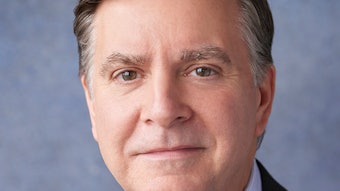Promoting equal treatment: Improving LGBTQ healthcare
As doctors, our goal is to improve the health of all of our patients. As our communities are becoming increasingly more diverse, so is our patient population. Understanding health and healthcare disparities requires acknowledging that a larger burden of suffering exists for certain patient populations, such as LGBTQ and gender nonconforming.
Noriko Yoshikawa, MD, and Erynne A. Faucett, MD, AAO-HNS Diversity and Inclusion Committee
As doctors, our goal is to improve the health of all of our patients. As our communities are becoming increasingly more diverse, so is our patient population. Understanding health and healthcare disparities requires acknowledging that a larger burden of suffering exists for certain patient populations, such as LGBTQ and gender nonconforming.
Implicit bias against certain groups can affect our ability to relate to them. Bias is a normal tool our brains use to link past experiences and cultural expectations to help make quick decisions. However, when biases are used to make decisions about people we do not know based on unverified assumptions, it can become problematic, and may be contributing to health disparities. Implicit biases are at play despite our best intentions. Due to strong cultural stigmas, a provider who is compassionate about LGBTQ rights may still have implicit biases they are not aware of, which can lead to treating these patients differently (Cooper et al. 2012).
Fear of stigma has been shown to lead to increased delay in urgent and preventative care in female-to-male transmasculine patients (Reisner et al. 2015). Is this likely true for other members of the LGBTQ community? Studies have shown implicit bias correlates with patient perception of the doctor as not being warm. Increasing our awareness of our own implicit biases is important in preventing unintentional discrimination.
The LGBTQ community is also subject to structural discrimination. This is produced by policies that may intentionally or unintentionally discriminate against them, such as lack of health insurance coverage for same- sex partners and laws allowing refusal of care for transgender patients. Millions of children have one or more gay or lesbian parents. In some states, it is possible that only one parent may have the legal right to give consent.
Depending on state law or hospital policies, same sex partners may not have after-hours visiting privileges. However, having a partner at the bedside can be invaluable for a patient recovering from surgery. It is in our patients’ best interest to have the support network they need in these important life events. We can familiarize ourselves with the discriminatory structures in place in our communities, and help our patients navigate the system in order to get what they need for the best recovery.
Although much of what we do in otolaryngology is not directly affected by sexual orientation, it is still something we need to be cognizant about. In taking care of our LGBTQ community members, we need to be aware of health disparities involving this group that includes mental and behavioral health, physical health, and susceptibility to risk-taking behaviors. They are at increased risk for depression, anxiety, suicide, obesity, asthma, and cardiovascular disease.
The LGBTQ population has higher tobacco, alcohol, and drug use as well as use of hazardous weight control behaviors (i.e., diet pills, vomiting/laxatives) (Fredriksen-Goldsen et al, 2014).
As we go through a typical new patient interview, if we default to assumed common gender identification and sexual orientation in talking with our patients, and we are therefore, alienating them. If we alienate them, we become less effective healthcare providers.
Do our intake forms encompass the full range of sexual and gender identity? When taking a history, it is better to ask, “Do you have a partner?” or “Are you in a relationship?” rather than “Do you have a wife/husband?” Ask this of every patient to avoid making assumptions. If the patient is accompanied by a same-sex partner, welcome and involve them in the conversation.
Just as in male-female relationships, the patient’s partner can be instrumental in treatment compliance and decision making, and we should be involving same-sex partners to help ensure the best outcomes. In taking a patient’s sexual history, again, we should not make assumptions about sexuality or sexual practices. For transgender patients, some prefer the pronouns they/them. It is safer to ask to clarify than to assume.
There are some unique situations that come up with LGBTQ patients. Some hospitals require preoperative pregnancy tests for any woman of childbearing age, however, some lesbian patients find this frustrating and invalidating. If these policies cannot be changed, consider ways in which the policy can be presented to the patient compassionately.
If we truly want to improve the health of all of our patients, it is important to provide a stigma-free, accepting environment for our patients and their partners to best enable them to get their healthcare needs met. We may not be able to fix all of the inequities that this subset of our patients face, however, increasing our own awareness of these challenges is key to decreasing disparities.
Please join us from 6:30-8:00 pm on September 11, at the Annual Meeting for the Diversity and Inclusion Committee social event at the Hyatt Regency’s “Big Bar” Chicago, 151 E. Wacker Drive. Drop by to mingle with others interested in diversity issues. No host bar.
Recommended Link:
https://www.ama-assn.org/delivering-care/physician-resources-lgbtq-inclusive-practice.
References:
Cooper LA, Roter DL, Carson KA, Beach MC, Sabin JA, Greenwald AG, et al. The associations of clinicians’ implicit attitudes about race with medical visit communication and patient ratings of interpersonal care. Am J Public Health. 2012;102(5):979–87.
Reisner SL et al. “Mental health of transgender youth in care at an adolescent urban community health center: a matched retrospective cohort study.” J Adolesc Health. 2015 Mar;56(3):274-9
Fredriksen-Goldsen KI, Simoni JM, Kim H-J, et al. The Health Equity Promotion Model: Reconceptualization of Lesbian, Gay, Bisexual, and Transgender (LGBT) Health Disparities. The American journal of orthopsychiatry. 2014;84(6):653-663












